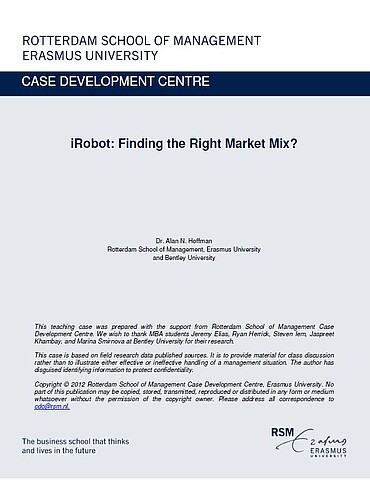Citation Note
Based on published sources; 15 pages.
Follow the 'handle' link to access the Case Study on RePub.
For EUR staff members: the Teaching Note is available on request, you can contact us at rsm.nl/cdc/contact/
For external users: follow the link to purchase the Case Study and the Teaching Note.
description
iRobot was among the first companies to introduce robotic technology into the consumer market. Facing increased competition in this market, should iRobot continue to develop new consumer products or focus on the military and aerospace marketplace where it already had importance presence?
Abstract
iRobot is among the first companies to introduce robotic technology into the consumer market. Home care robots have been its most successful products, with over 5 million units sold worldwide and accounting for over half of its total annual revenue. The focus on home care products differentiates iRobot from all the other manufacturers in the robotics industry, which are mainly focused on manufacturing robots for the automotive sector. At the same time, iRobot also has a long-term contractual agreement with U.S. government to produce military robots. Serving two entirely different markets – consumer and military – gives iRobot: (1) the ability to leverage its core capabilities and diversification, and (2) a hedge against slower demand in one sector. By introducing robotics to the consumer market, iRobot has created a “blue ocean.” However, the company has numerous competitors with more experience in the consumer marketplace. Long-term success in the consumer market will require iRobot to develop more “blue oceans.” Does it make sense for iRobot to continue to develop new consumer products or would they be better off focusing on the military and aerospace marketplace?
usage
This case is written in a way that complex strategic decisions can easily be analyzed during limited classroom discussion time. Professors have commented that the case has worked well in their classrooms.
